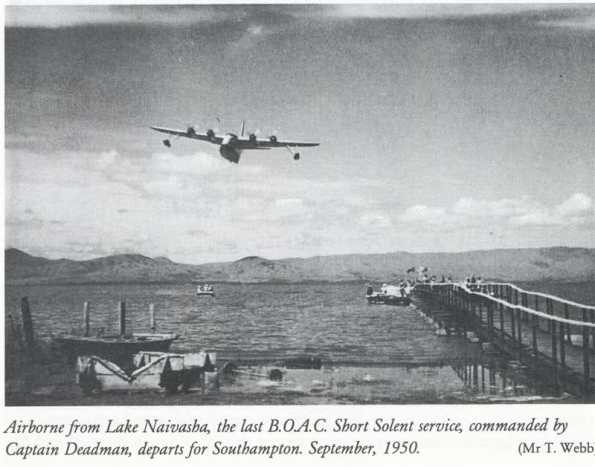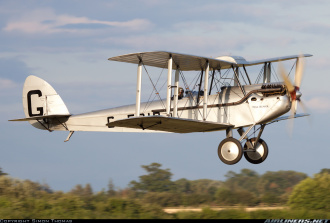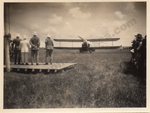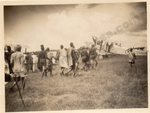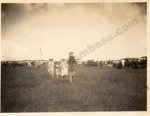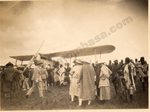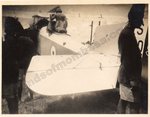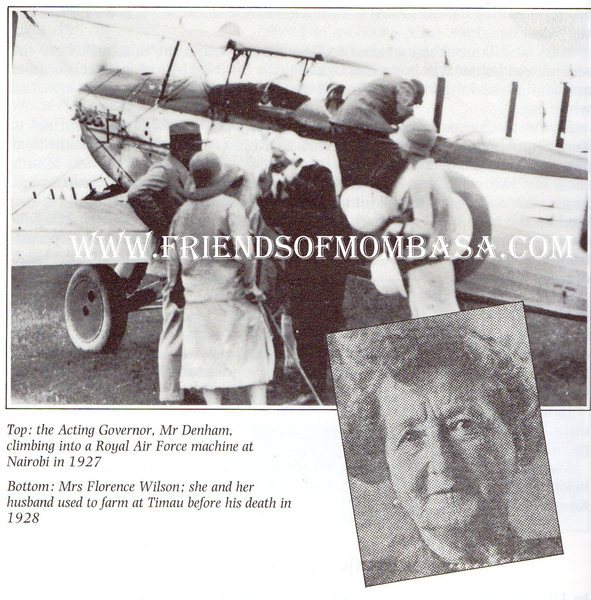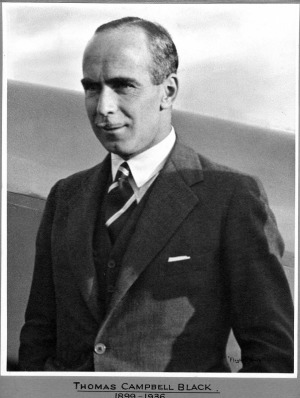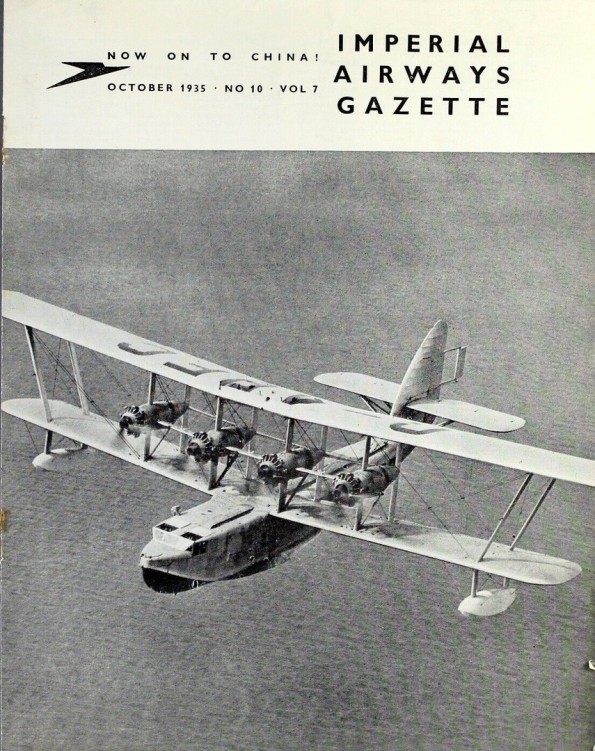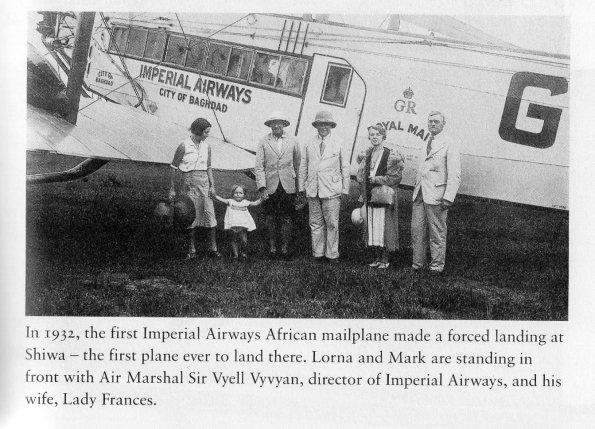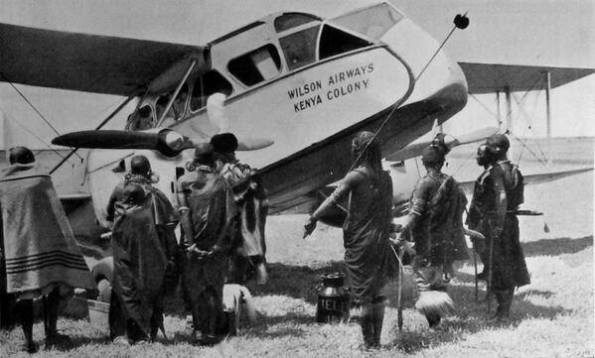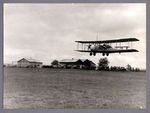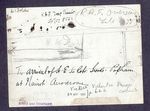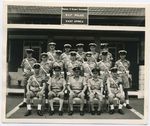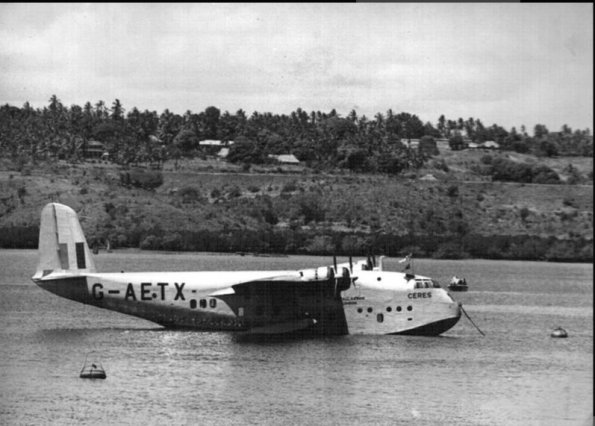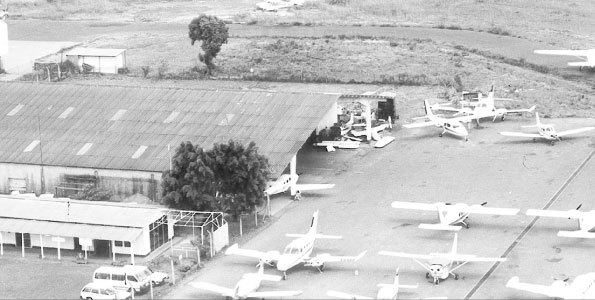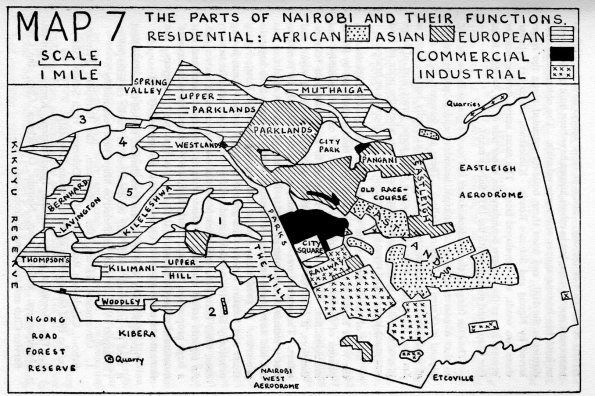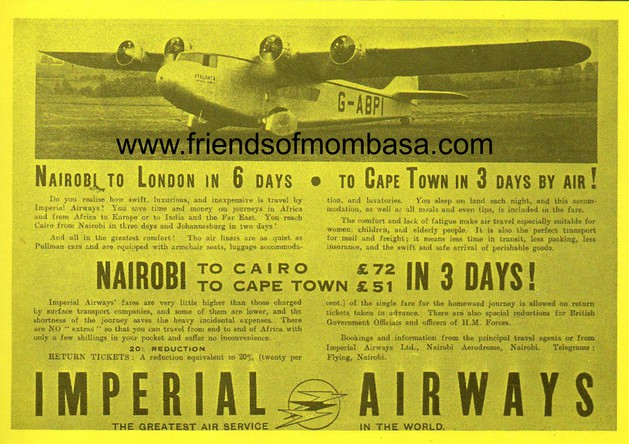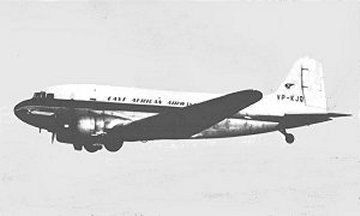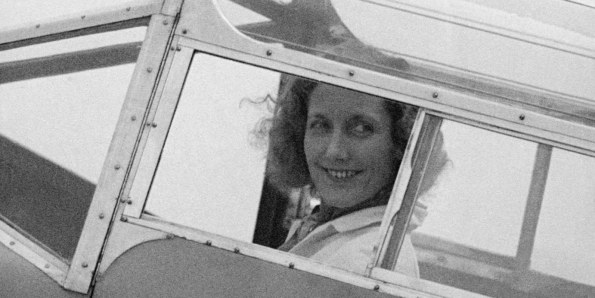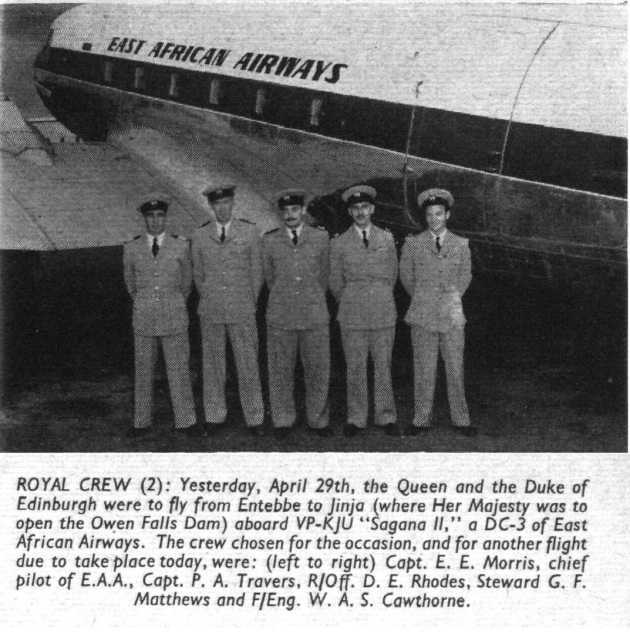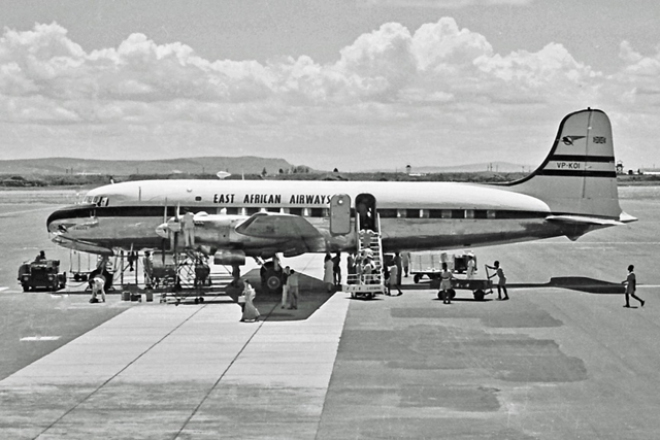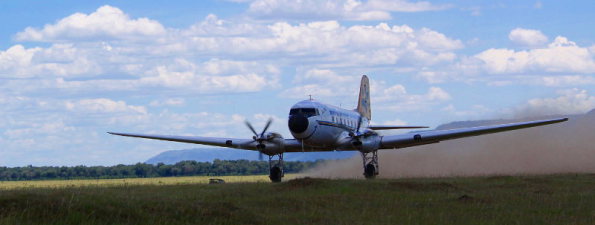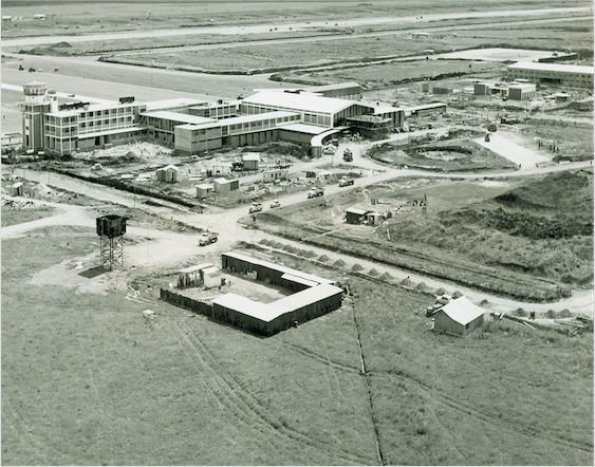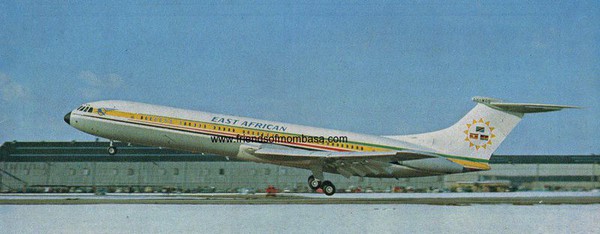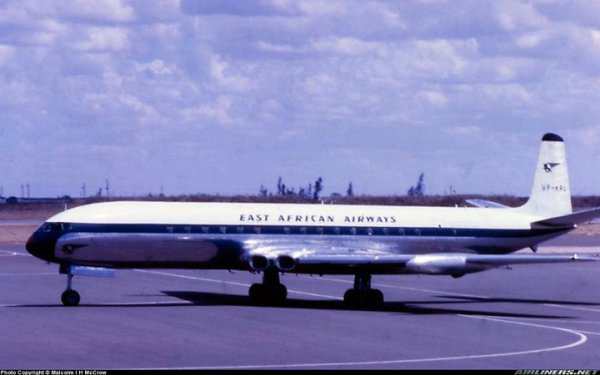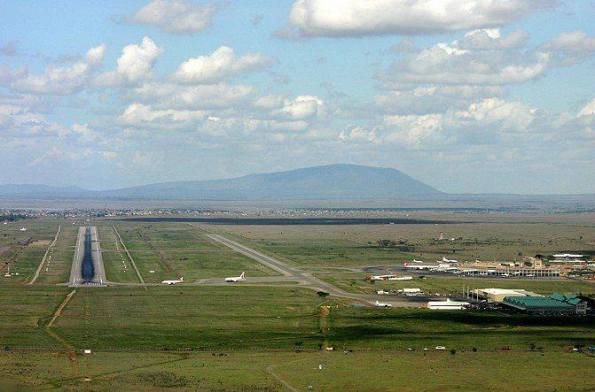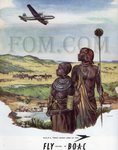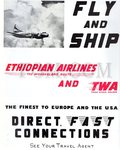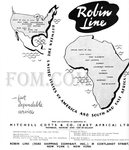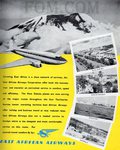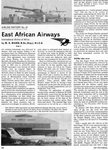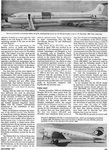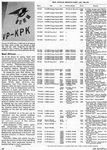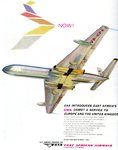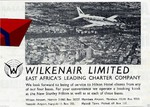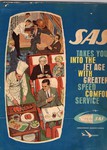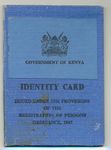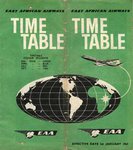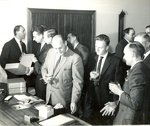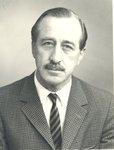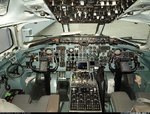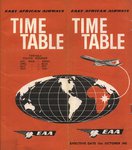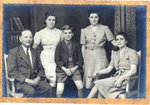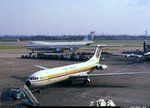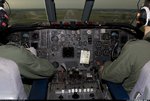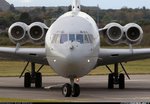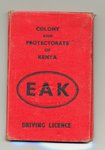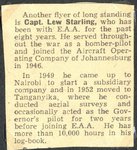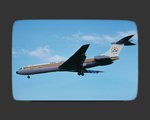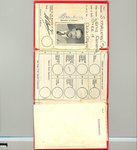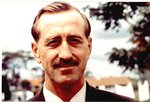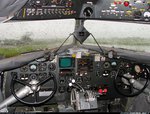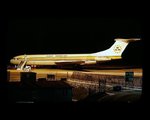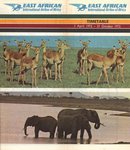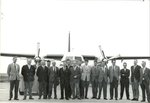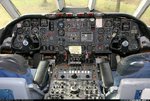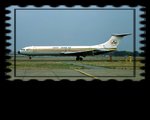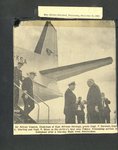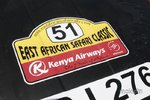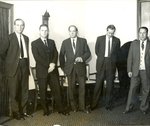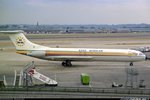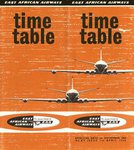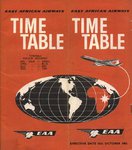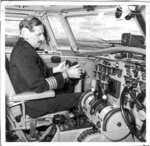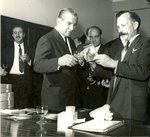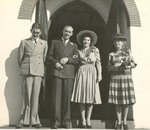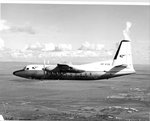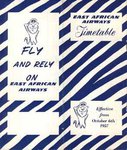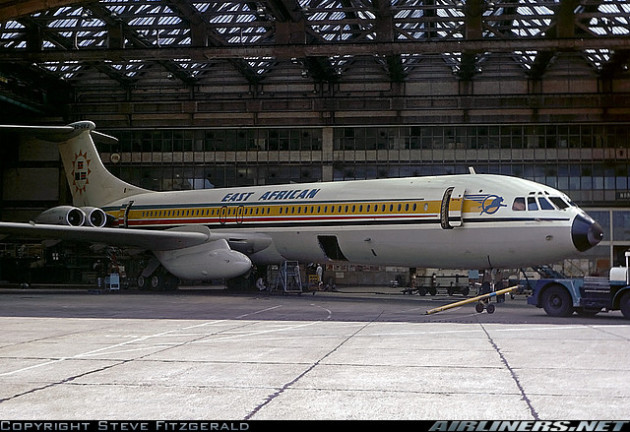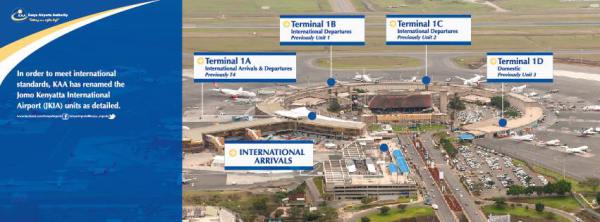Aviation History of East Africa
The history of aviation in East Africa, went something like this, around 1924 the possible air link between Britain and East Africa was among those which were thought out. Among those interested were directors of North Sea Aerial & General Transport Ltd, a subsidiary of the Blackburn Aeroplane and Motor Company. Captain Norman Blackburn and Tony Gladstone who acted as a prospector went to Cairo, Khartoum, to Kisumu. Later Governor William Gowers then Governor of Uganda set the ball rolling. Sea Plane “Pelican” was launched in 1926 for physical survey of the Khartoum-Kisumu route. Later in 1929 Mrs Florence Wilson began to operate a service linking Kisumu, Mombasa and Dar-es-Salaam with Nairobi. Wilson Airways was ready to connect with Imperial Airways when the first regular service began on Feb 28 1931.
It is also understood, that at the outbreak of the Second World War pilots and Engineers joined the Kenya Auxiliary Air Unit, and later the RAF, and Wilson Airways ceased to function as an independent Airline. It was later merged into East African Airways.
A person by the name of Campbell Black was the first person to fly from Nairobi to Mombasa and back in a day.
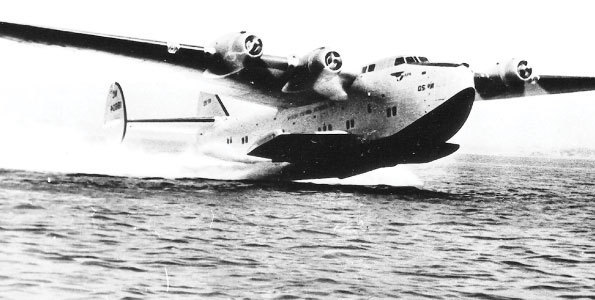 Click above (This is a Boeing 314 operated by Pan American,such models were not used in East Africa).
Click above (This is a Boeing 314 operated by Pan American,such models were not used in East Africa).
When Lake Naivasha was an international airport
A flying boat landing in the water. Above, Naivasha’s Sparks Hotel ( now country club) hosted the immigration and boarding facilities for new arrivals. FILE
Forget Kodak, the latest entrant in the graveyards of technology, – but who would have ever thought that Lake Naivasha “International” Airport would be lying desolate, virtually unknown and with little historical acknowledgement.
It is hard to imagine how technology trashes some businesses and lifts others. Let us look at Lake Naivasha for starters.
To The Victoria Falls
Development of the Victoria Falls
The Flying Boat Service
http://www.tothevictoriafalls.com/vfpages/tourism/flyingboats.html
The de Havilland DH.51
The de Havilland DH.51 is a 1920s British three-seat touring biplane built by de Havilland at Stag Lane Aerodrome, Edgware.
http://www.rcgroups.com/forums/showthread.php?t=2118123
G-EBIR first flew in September 1925, and early in the following year went to Nairobi to become the first aircraft to be registered in Kenya. Registration systems changed with the expansion of civil aviation, and after four months in which ’IR flew as G-KAA, Kenya was allocated its own prefix and this long-lived machine became VP-KAA for the next forty-three years. Through a co-operative venture which included considerable help from Hawker Siddeley Aviation– later absorbed into today’s BAE Systems – (as successors to the de Havilland Aircraft Co) ’KAA was airfreighted home to England in a vast Blackburn Beverley for permanent preservation by the
Shuttleworth Collection at Old Warden in Bedfordshire. H-SA refurbished G-EBIR at their
Hawarden (Chester) works and, after a long time away from home, the last DH51 came
back to live only about forty miles from where is had been
built fifty years previously.
http://www.iaopa.eu/mediaServlet/storage/gamag/dec06/DH51.pdf
Following the D.H.37 two-seat tourer of 1922, de Havilland's next aircraft in this category was the de Havilland D.H.51. As a result, only three were built; the first two enjoyed reasonably long and active lives, being written-off in 1931 and scrapped in 1933 respectively, but the third, built in 1925 and shipped to Kenya, became the first aircraft on that country's civil register. Dismantled during the war, it survived to fly again and now, after several rebuilds, is again back in the country of its birth, maintained by the Shuttleworth Trust at Old Warden as the oldest airworthy design of the de Havilland Aircraft Company.
Aerodrome Nairobi, Kenya, 1926 arrival of RAF Cape to Cairo Aircraft
Happy Valley love affair that led to the birth of Nairobi’s Wilson Airport
The story of Nairobi’s Wilson Airport cannot be told without looking at the short love affair that blossomed between millionaire farmer Florence Kerr Wilson —whose husband had died — and a handsome twenty-something British pilot, Captain Thomas Campbell Black.
Other related stories...
http://www.africanaerospace.aero/how-wilson-airport-landed-a-place-in-history.html
https://en.wikipedia.org/wiki/Wilson_Airport
https://www.kaa.go.ke/corporate/about-us/our-history/
The Africa House by Christina Lamb
Imperial Airways
This day in aviation
Important dates and aviation history
20 January 1932: Imperial Airways’ Handley Page HP.42, G-AAXF, named Helena, departed Croydon Aerodrome, South London, England, on the first leg of the airline’s new intercontinental mail service to South Africa. The flights would leave Croydon at 12:30 p.m. on Wednesday and arrive at Cape Town on Friday, ten days later.
The route was London, Cairo, Khartoum, Juba, Nairobi, Mbeya, Salisbury, Johannesburg and Cape Town.
The initial flights carried mail only, but scheduled passenger service was soon added. The cost of the flight from London to Cape Town was £130.
G-AAXF Handley Page HP.42W…
THE AIR JOURNEY FROM NAIROBI TO LONDON.(By Sir Edward Buck
C.B.E)
LONDON, June 28th 1935.
DOUBT if there are many countries, if size and population are taken into account, which are more air-minded than Kenya. The nature of the country makes flying a most suitable form of transport as roads often become unserviceable in wet weather. The air-mindedness in the Colony undoubtedly owes much to the energy and enterprise of Mrs F. K. Wilson, who founded “Wilson’s Airways” in 1929.
From a single machine named the Knight of the Mist the fleet and personnel has increased to eight aircraft with three pilots and three engineers in two and a half years, and trips have been made to England, to Cairo, to Zanzibar, Rhodesia and South Africa. The Company has to-day completed 1,100,000 miles of flying, and numerous mails and passengers, including the Prince of Wales, have been carried without a single contretemps. In 1933 Mrs. Wilson received a well -deserved O.B.E. for services rendered to the cause of aviation in East Africa. The Wilson Airways Company’s ambulance transportation has already saved several lives in Kenya, and to-day the Company which uses De Havilland aircraft exclusively and has a contract with the Tanganyika Government for all Government flying in that territory, in working in close conjunction with Imperial Airways Ltd. A former manager and pilot of Wilson’s Airways was Captain Campbell Black, Scott’s partner in the recent famous race to Melbourne.
Quite a number of Settlers, too, are reliable pilots and also possess both aeroplanes and convenient private aerodromes. For instance, within a radius of thirty miles from Nyeri, one of the beauty spots of the Colony, about 100 miles from Nairobi, there are no fewer than thirteen privately-owned landing grounds of various sizes.
The Nairobi aerodrome, which boasts of a pilot’s club, affords as good a landing ground as any 1 have seen, and it also possesses the somewhat peculiar feature of quite large herds of zebra, wilde- beeste and gazelle which graze quietly on the plain in perfect happiness and security only a few hundred yards from the centre of the ground. Every few hours apparently sees the departure of a plane for Mombasa, and South Africa or for Kisumu on Lake Victoria, for Kakamega and its gold fields, or for some up-country township. Aeroplanes over Nairobi are now such familiar sights that few residents ever look up at them.
To London By Air
HAVING lingered in the salubrious climate and the attractive districts around Mount Kenya longer than I at first intended, I made inquiries about the journey by air from Nairobi to London, and I quickly decided to travel home by one of the luxurious Imperial Airways liners which now voyage regularly from the capital of the Colony to London. It is true that the cost of a passage is rather higher than that of a sea voyage from Mombasa, but the saving of over a fortnight in time was a decided advantage, and then there was the attraction of indulging in a new adventure and in flying thousands of miles from one great continent to another, and testing the various reports one had heard about the advantages and disadvantages of the journey.
The itinerary itself as supplied to me by Imperial Airways Ltd. looked extremely attractive. Kisumu on one side of the great Lake Victoria Nyanza, and Entebbe, the capital of Uganda on the other, were two of our first halting stations, and later on in the programme came Juba, Khartoum, Wadi Halfa, Cairo, Alexandria, Athens, Brindisi, Paris and London. It sounded an interesting route.
But now to give some idea of the 5,000 miles journey to London. On arrival at the Nairobi aerodrome I was introduced by Lord Francis Scott to Lord and Lady Chesham who have interests in Swaziland and were flying to England. I also renewed acquaintance after many years with Mr. F. E. Kanthack, C.M.G., formerly of the Indian Irrigation Department and now a leading engineer citizen of Johannesburg, another passenger bound for London.
Having gone through the ordeal of being weighed at the aerodrome on a very exact machine—an unpleasant proceeding for if one weighs over 14 stone it only leaves you 33 lbs. of free
baggage, and one has to pay rather heavily for anything in excess—I became an Imperial passenger, a proud title, and took my seat in the plane which had arrived from Salisbury the night before. This
was the Amalthea, a monoplane with four engines of 340 horsepower each, a speed of 120 miles per hour and accommodation for 11 passengers. The first thing I noticed as we rose into the air was the
wide ditch and fence which encompassed the big aerodrome, and this I was told had been found necessary to prevent the numerous herds of wilde-beeste and buck which were visible on the adjoining plane
from endangering the safety of planes both arriving and departing. We quickly sailed at above 3,000 feet over coffee plantations and forests and then enjoyed a really marvellous and beautiful view of
cloudland as we flew above hundreds of large and snow white clouds in bright sunshine. Emerging from cloudland we passed over miles of undulating country consisting of huge green plains or dark
forest intersected by little muddy streams, truly a green and smiling land with apparently un-limited space for development. Passing over hundreds of quaint little native villages, all surrounded
with thick hedges to keep their stock in and wild animals out, we landed smoothly at Kisumu on the extremity of the great blue lake of Victoria Nyanza which stretched out in front of
us.
Across The Equator
AT Kisumu we find waiting for us the Hengist, the splendid Handley Page biplane in which we are to fly to Alexandria. It looks huge for it can carry 24 passengers, possesses a steward and buffet, besides its Captain, First Officer and Wireless Operator. It has a span of 132 feet, is 90 feet long and when loaded up is 14 tons in weight. Punctually to the timetable we proceed from the immense hangar, four great engines sing and roar together, we run along the ground, gather speed, we lift into the air, buildings below shrink away from us, we leave fair Kenya behind us, we pass down the Gulf of Kavirondo and find ourselves flying 170 miles over Lake Victoria, the great inland sea studded with numerous islands mainly inhabited by the tsetse fly. A slight storm and we cross the Equator. We leave Kampala, the Uganda capital, behind us, we hover over and alight at Entebbe, the beautiful official home of the Uganda Government. Here I discover an A.-D.-C. to Governor Sir Bernard Bourdillon waiting with a motor car to carry me off to lunch. Only forty minutes are allowed for our stop, but I managed to admire the wonderful beauty and charm of the Government House gardens and surroundings and to congratulate the Governor on his new appointment as Governor or Nigeria, to answer various questions about India, and His Excellency’s old Province, the United Provinces, and hear some of his recollections of Saugor where he served as an Assistant Remount officer in 1917. Then, off again across fertile Uganda, through a second rainstorm, and so over densely forested and decidedly swampy country with occasional wide rivers where hippo quickly submerge as the plane roars over them. There was no sign of human or animal iife in these enormous emerald green forest stretches until a couple of elephant were spotted.
Having crossed the Victoria Nile we finally came to the White Nile slightly west of Nimule, and had it not been for a tropical thunderstorm we should have seen Lake Albert. About 5 o’clock we reached Juba, the capital of Mongalla Province, and the terminus of the traffic on the White Nile 670 miles from our starting point.
A bath, good dinner, and a comfortable bed in a clean hotel and at 7 a.m. we again went off at 100 miles an hour in the cool of the morning and within half an hour we passed over big herds of giraffe and elephants, which showed little concern at our passage. And then for some 300 miles or so right across the huge green Bor swamp with more herds of elephants, their huge white tusks gleaming in the sunshine while occasional hippo wallowed in the pools. Could any animals have a more wonderful sanctuary than this enormous expanse of swamp?
We sail over Malakal, a neatly laid- out little town, with apparently some lovely gardens, and land on a specially prepared asphalt run in the centre of bogland to take in 400 gallons of petrol, for we consume just over a hundred gallons an hour. Imperial passengers walk a couple of hundred yards and find fresh pineapple and coffee waiting for them in a tent. At 11 o’clock we leave for Kosti 200 miles ahead and fly between three and four thousand feet over flat and uninteresting- country consisting of small bush and open burnt out spaces. And suddenly we find the Hengist bumping and we are in desert country. We begin to descend and we are at Kosti, a very sultry spot on the Sudan Light Railway where we again take in petrol. We fly straight above the Blue Nile which is much wider and more muddy than ever, but with more village life on its banks, and many small cultivated islands. And here I may say that the Wireless Operator has no idle time for he is constantly getting and sending weather reports and signalling the position of the aeroplane, both at the port he has left and at the destination ahead. Our bumping is now very slight, but the heat has increased —villages and herds of cattle, flocks of goats, strings of camels along the river bank make the traveller realize what the Nile means to the dwellers on its banks.
In Khartoum
^PPROACHING Khartoum we had a fine view of the new dam now being constructed over the river as well as the neat little garden town constructed near it. We overtook a paddle steamer at the same time. Landing at Khartoum we are conveyed to the Grand Hotel and are comfortably housed and well looked after. The Game Warden, Major Barker, also the Superintendent of the Zoological Gardens, courteously conducts some of us round the gardens, and shows us how to play a game of football with a young lion. The contest would have been more successful if the lion had not constantly endeavoured to eat the ball. We saw here the junction of the White and Blue Niles, admired the fine memorial to General Gordon of undying* fame, and visited an open air cinema* after dinner. The next morning we- left' the capital of the Sudan at 5-30 a.m. having seen enough of the city rebuilt by Kitchener in the form of the Union Jack after his famous victory at Omdurman to make us confident that we none of us wanted to reside there for it was hot, and indeed a city in the desert with a rainfall of only 10 inches a year.
We proceed smoothly and steadily but for long hours there is nothing to look at; below us the world lies hot, fiat, sandy and sometimes black in the white African sunlight, and passengers lightly attired in shirts and trousers sit and read or doze in their very comfortable adjustable armchairs. It is easy to imagine being lost in this terrible desert and we recall the recent account of the four unhappy French political officials who, having missed their way, all perished on their motor journey near Wadi Halfa from want of petrol, water, and provisions. Having alighted at the unattractive town of Wadi Halfa for petrol and refreshments our excellent pilot, Captain J. C. Harrington, takes us up to 10,000 feet where there is an absolute absence of bumping. We have a fine view of the Assouan Dam across the Nile, and the air is quite cool as we travel across the grey rocky desert. The steward brings us a refreshing cup of tea. How many of my friends I wonder have drunk tea and played bridge up in the sky at 10,000 feet? The Nile looks really blue for the first time, it makes a great loop and we view vast patches of green cultivation beyond it.
The visibility is marvellous and gradually vegetation increases along its banks and one is enabled to understand the wonderful irrigation systems of this great river, one of the longest in the world We begin to descend and we find ourselves at Luxor. We enter taxis and after a dusty drive between fields of cotton and maize reach the fine Luxor hotel on the river bank. Within half an hour Lady Chesham insists on an immediate visit to Thebes, the Tombs of the Kings, and the site of the famed Tutenkhamen excavations. So having secured a guide we cross the river by boat, risk our lives in a dilapidated motor car, travel some miles along a most desolate dreary hill road and suddenly arrive in a rugged broken up terminus. Here are various stepped paths all leading down to caves closed by barred gates with solemn black-frocked guardians. The marvellous carvings, tracery on the walls, and the coloured designs decorating the tombs of the ancient kings of Egypt, have been so often described that I simply refer other travellers to that thrilling volume by Howard Carter and A. C. Mace which tells the story of how the Tomb of Tutenkhamen was discovered. Suffice it to say that over 30 kings have resting places in this weird and barren spot and that we visited the tombs of King Seti II and of King Ramses VI which were in most wonderful preservation after 3,500 years. I was personally disappointed in finding Tutenkhamen’s tomb of little interest as all the precious and valuable treasures had been carried away to the Museum at Cairo. These marvellous tombs made one feel very insignificant-
We had no time to see the great temples of Karnak and other famous Luxor ruins save from the air. After leaving Luxor we flew over the wide green broad belt of cultivation irrigated by the Nile with countless villages, water channels, date palms and cotton fields.
We followed the river closely and after a brief halt at Assiut, noted for its huge barrage, we sight the famous Pyramids and Sphinx, while the great drab looking city of Cairo with its mosques and spires lies down away on our left. We alight at Heliopolis, the suburb about six miles from the city which latter we were all sorry not to have the chance of visiting. For miles around the country looked green and fertile. We changed here into a second airship for Alexandria with considerable regret as we had all greatly appreciated the courtesy of the Hengist’s Commander, his First Officer and the Steward. A short flight and we were at Cleopatra’s city of Alexandria where we alighted at the R.A.F. aerodrome at Aboukir as the civil ground was under repair. We then had quite a long motor drive to our hotel for the actual length of the sea front is something like nine miles, one of the longest existing. However it was good to get a smell of the seaweed and the cool breeze off the Mediterranean was extremely pleasant to travellers from the burning desert. In the evening we discarded our thin suits for warmer clothing and wandered through the bazaars which teemed with people of many nationalities. We all appreciated the comfort of the Cecil Hotel where food and service were extremely good.
The following morning we were conveyed to the port where we saw King Faud’s royal yacht lying, as it always does, with steam up ready to sail at a moment’s notice, and here we embarked 011 the graceful flying boat Satyrus for Brindisi. There was not much difference in motion between this and the ordinary plane and we flew steadily and quite low to the water over a calm sea for 370 miles to Crete, quite an uneventful journey. We alighted like a swallow in a small bay, took in petrol refreshed ourselves with tea on the Company’s yacht and then started off for Athens where we arrived about midday. The city looked huge hut rather uninteresting, though we got a fair view of the Acropolis and the Parthenon. We should have loved to stay and wander among its ancient temples, but we only halted for half an hour. All the way from Crete the island scenery had been very beautiful but the Gulf of Corinth was to provide us with the most enchanting scenery of the trip. They lay like jewels circled with silver white sand and shaded with ancient olive trees, these Grecian isles “where burning Sappho loved and sang.” Brown barren mountains rose on either side of us. The Satyrus bucked at times like a kicking horse but no one seemed to mind, and we flew steadily at some 3,000 feet towards Corfu, above the clouds in glorious weather. The sea here is shallow and we see the rocks on its bed, very distinctly marked-
At length we reach Brindisi. We quickly pass the Customs, spend an hour or two in a hotel which cannot compare with some of those on the other side of the Mediterranean and in the evening after dinner we entrain for Paris. We wake early and refreshed to find ourselves really in Europe and we all enjoy the smooth run up the Italian coast with the blue sea still close by while we pass through an extraordinarily neat, clear and smiling country. The stations are full of oleanders and other sweet smelling flowers, there are various officials in gorgeous uniforms, and on all sides thrifty peasants are working among the vineyards and green crops or in their tiny gardens. Judging from the huge stacks the wheat and barley harvest appears to be excellent and the gleaners are apparently doing well for themselves.
We enjoy- cherries, peaches and apricots with our morning tea and the sandy wastes of the Sudan begin to feel very far behind us. And so we pass through Ancona, Bologna where we lunch and
reach the fair city of Milan at half past three in the afternoon. Here we all admire the majestic proportions and decorative appearance of the great railway station second to none in Europe we are
told. We hire a taxi and dash off to view the superb cathedral of which the city is so justly proud. Tea at the Excelsior Hotel and we are soon passing through enchanting scenery and many of us
wishing we owned one of the beautiful villas with- which the lovely lake of Maggiore is surrounded. This is without doubt the most delightful day of our trip. We presently dash through the Simplon
tunnel and emerge into Switzerland and the Rhone valley with snow-capped mountains on either side of us.
The Last Hop
DINNER and bed, and we, wake to a dull and wet morning at Paris and feel we have truly said goodbye to the sunny south. After breakfasting there is a long drive across the city to the fine airport of Le Bourget, and we are quickly' up in the sky once more, and bound for London. For a short time we admire la belle, France and we get a brief glimpse of the Channel, but we rapidly rise above the clouds to 4,000 feet and really see nothing of England till we alight at Croydon. Our last hop is over and a motor drive to the Victoria Terminus completes our wonderfully interesting air journey from Africa to Europe.
And now for a few remarks on the advantages of air travel and this trip in particular. The courtesy of all Imperial Airways officials I cannot praise too highly, while the organization is perfect. Al! one’s baggage is taken care of from the start and transferred from place to place with excellent promptitude, the hotel fare is quite good and above all there is no tipping whatever. The Company issues its own coupons at five shillings each which are cashable at every halting station. The adjustable chairs in the Hengist which allowed one to recline and sleep m comfort were universally appreciated and should be fitted in all future aircraft. Finally one travels speedily and smoothly and saves much valuable time, sees and learns more of world conditions than is possible on a journey by steamer or train, and one really experiences no personal trouble of any kind whatsoever.
<< New text box >>
History of RAF in Kenya.
RAF Eastleigh was a Royal Air Force airfield in Kenya, in the Eastleigh suburb of Nairobi. The name "RAF Eastleigh" was also used during 1935 for the airfield in England that became RAF Southampton
in 1936. ... From 1945 to 1958, Eastleigh also operated as Nairobi's main international civilian airport.
RAF Eastleigh was a Royal Air Force airfield in Kenya, in the Eastleigh suburb
of Nairobi. The name "RAF Eastleigh" was also used during 1935 for the airfield in England that became RAF Southampton in 1936.
Eastleigh was the primary RAF station for East Africa, and home to Air Headquarters East Africa after force reductions in the 1950s. However, because of its high elevation and short runways (which could not be extended because of its location close to the city), from the arrival of No. 208 Squadron RAF in the late 1950s with its Hawker Hunters, jet fighters and bombers had to operate out of nearby Embakasi Airport.
https://en.wikipedia.org/wiki/Moi_Air_Base
|
Nairobi Embakasi…MCcrow |
|
Nairobi Embakasi was opened in May 1958 by the Governor. The Queen Mother was unable to undertake the official opening owing to her QANTAS Constellation being delayed due to engine trouble. The Queen Mother had been on an official visit to Australia. |
http://www.mccrow.org.uk/eastafrica/NairobiAirport/Nairobi%20Airports.htm
RAF Eastleigh and Embakasi Airport
Eastleigh Royal Airforce, Xmas 1958, Squadron Standard 1959 and Visits.
G-AETX 'Ceres' at Mombasa, Kenya 1939. Short S-23C Empire Flying Boat, c/n S.840. Delivered to Imperial Airways 20th July 1937. To BOAC 22nd August 1940. Destroyed at her moorings in Durban when she caught fire and blew up, 1st December 1942.
Click on Photo
EAST AFRICAN AIRWAYS
The mainstay of the East African Airways fleet on the internal routes until the early 60s was the C47B.
By 1961 direct internal flights between Nairobi and Entebbe were being operated with the Canadair 4s - ex-BOAC Argonauts which had been displaced from the international routes by the brand new de Havilland Comet 4s - VP-KPJ and VP-KPK. The Comets were soon augmented by a third - VP-KRL
http://www.mccrow.org.uk/EastAfrica/East_African_Airways/East_African_Airways.htm
The Many Lives of Beryl Markham
http://scandalouswoman.blogspot.com/2013/04/the-many-lives-of-beryl-markham.html
Today in Transportation History – March 9, 1958: A New Airport for Kenya
A new airport made its debut in the Embakasi suburb of Nairobi in what was then the British Colony and Protectorate of Kenya. (British rule came to an end in 1963, with Kenya achieving its independence under a black majority government; the present-day Republic of Kenya was formally established the following year.) Sir Evelyn Baring, the British colonial governor of Kenya, substituted for England’s Queen Mother in officially opening Embakasi Airport during a Sunday ceremony. The mother of Queen Elizabeth II was supposed to perform the inaugural duties for the airport, but couldn’t make it to Kenya on time due to a plane delay en route from Australia.
The airport has since been renamed in honor of Jomo Kenyatta, who served as independent Kenya’s first president and prime minister. Jomo Kenyatta International
Airport has scheduled flights to more than 50 countries and is one of the 10 busiest airports in all of Africa.
Early days
The predecessor of East African Airways was an airline called Wilson Airways. This was formed by a lady named Mrs Florence Wilson in July 1929. This was shortly after she had flown from Nairobi to England in a Fokker Universal (VP-KAB). She realised the need to develop air transport in East Africa and had the capital to start it. The first aircraft flown was a DH60G Gipsy Moth (VP-KAC) and was based in Nairobi. The initial operations were charter work as there were only three airstrips in existence at that time.
Nairobi Embakasi
Nairobi Embakasi was opened in May 1958 by the Governor. The Queen Mother was unable to undertake the official opening owing to her QANTAS Constellation being delayed due to engine trouble. The Queen Mother had been on an official visit to Australia.
http://www.mccrow.org.uk/EastAfrica/NairobiAirport/Nairobi%20Airports.htm
Interesting photos by Derek Kershaw
These photographs originate from the private album of WW2 SAAF fighter pilot Bob Kershaw. It was kindly made available to me by Derek Kershaw, Bob's son. I copied and placed the photographs on this web site in order to share these gems to enthusiasts and the wider public as a gesture of homage to these brave men of past glory. Please respect the copy rights of these photographs and contact me to obtain the necessary permission if you want to duplicate some of this material in other web sites or printed matter.
thanks
Tinus le Roux
Februaryl 2014
http://saafww2pilots.yolasite.com/bob-kershaw-photographs.php
http://www.air-despatch.co.uk/pages/opendoor/03/flood/kenya.htm
http://www.vintageminor.co.uk/Gilg/Gilg.html
The first and last VC10 flight of Captain Richard King
http://www.vc10.net/Memories/A4OAB_Royalflight.html
Nairobi Embakasi Nairobi Embakasi was opened in May 1958 by the Governor. The Queen Mother was unable to undertake the official opening owing to her QANTAS Constellation being delayed due to engine trouble. The Queen Mother had been on an official visit to Australia.
Courtesy of and credit to Mr Anton Starling, Captain Lew Starling East African Airways. Click on Photo below, to enlarge.
BOAC NEWS LETTER STAFF MAGAZINE AUGUST 1948 EASTLEIGH NAIROBI


